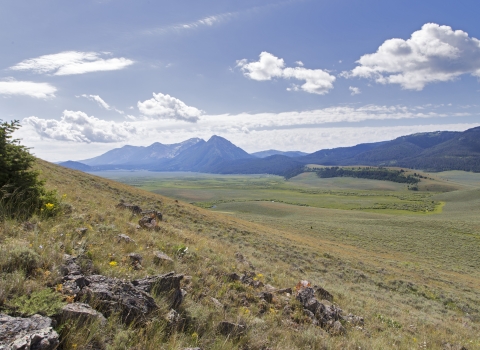The U.S. Fish and Wildlife Service’s National Wildlife Refuge System announced today a Director’s Order to allow the use of low-speed electric bicycles (e-bikes) at national wildlife refuges that permit traditional bicycling, expanding recreational opportunities and access. E-bike use is now permitted at any refuge where biking is deemed to be consistent with the site’s statutory purpose.
The Director’s Order supports Secretary’s Order 3376, which was signed by Secretary of the Interior David Bernhardt on August 29, 2019. It also supports Secretary’s Order 3366 to increase recreational opportunities on public lands.
Secretary’s Order 3376 directs Department of the Interior (DOI) bureaus to begin the longer term process of obtaining public input on new regulations that will clarify that low-speed e-bikes should enjoy the same access as conventional bicycles, consistent with other federal and state laws. Refuge managers will have the ability in the short term to utilize the flexibility they have under current regulations to accommodate this new technology that assists riders as they pedal in a way that allows them to enjoy the bicycling experience.
DOI’s guidance will enable visitors to use these bicycles with a small electric motor (less than 1 horsepower) power assist in the same manner as traditional bicycles. The operator of an e-bike may only use the small electric motor to assist pedal propulsion. The motor may not be used to propel an e-bike without the rider also pedaling, except in locations open to public motor vehicle traffic.
A majority of states have adopted e-bike policies, most following model legislation that allows for the three classes of e-bikes to have access to bicycle trails. The Department of the Interior e-bike guidance seeks to provide consistency with the state and local rules where possible.
The Fish & Wildlife Service’s Director’s Order permits visitors to use low-speed e-bikes on national wildlife refuge national wildlife refuge
A national wildlife refuge is typically a contiguous area of land and water managed by the U.S. Fish and Wildlife Service for the conservation and, where appropriate, restoration of fish, wildlife and plant resources and their habitats for the benefit of present and future generations of Americans.
Learn more about national wildlife refuge roads, trails and designated areas where traditional bikes are allowed. For more information on bicycling on refuges, including a state-by-state list of refuges where bicycling is allowed, please visit: https://www.fws.gov/refuges/biking/
For more information about e-biking on refuges, please visit: https://www.fws.gov/refuges/biking/e-bikes.html
In 2018, more than 1.3 million people bicycled at 193 national wildlife refuges. The Refuge System’s new e-bike guidance provides expanded options for visitors who wish to ride a bicycle and may be limited by fitness level, age or ability.
Similar to traditional bicycles, e-bikes are not allowed in designated wilderness areas and may not be appropriate for back-country trails. The focus of the Department of the Interior’s guidance is on expanding the traditional bicycling experience to those who enjoy the reduction of effort provided by this new e-bike technology. Local refuge and land managers will limit, restrict, or impose conditions on bicycle use and e-bike use where necessary to manage visitor use conflicts and ensure visitor safety and resource protection.
E-bikes make bicycle travel easier and more efficient, because they allow bicyclists to travel farther with less effort. When used as an alternative to gasoline- or diesel-powered modes of transportation, e-bikes can reduce greenhouse gas emissions and fossil fuel consumption, improve air quality, and support active modes of transportation for visitors. Similar to traditional bicycles, e-bikes can decrease traffic congestion, reduce the demand for vehicle parking spaces, and increase the number and visibility of cyclists on the road.
The Refuge System is an unparalleled network of 567 national wildlife refuges and 38 wetland management districts. More than 55 million Americans visit refuges every year. You can find at least one refuge in every state and every U.S. territory, and within an hour drive of most major cities.



